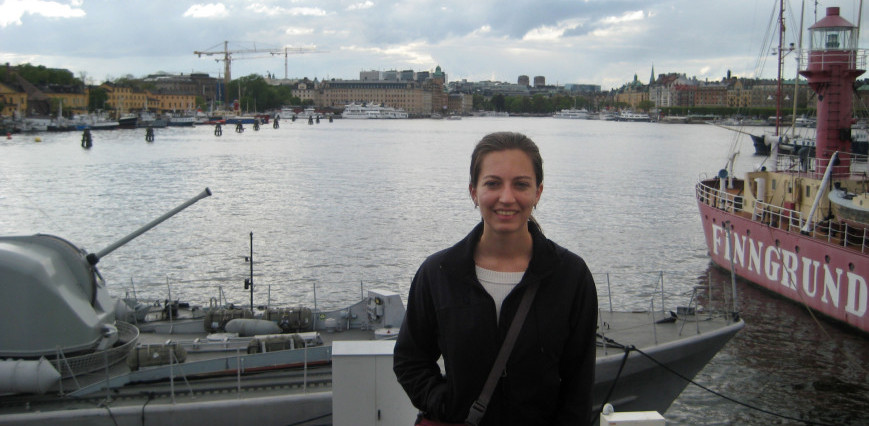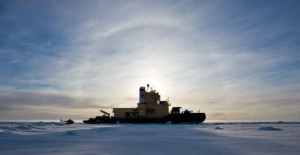
Adele Igel, a graduate student in CSU’s Department of Atmospheric Science, recently visited Stockholm University, where she worked with Professor Annica Ekman and her research group to study Arctic clouds.
The trip was made possible by the NSF Graduate Research Opportunities Worldwide (NSF GROW) Award she received in 2014 – an award that provides support for a visit to an international institution to conduct research for three months in 2015.
Igel’s NSF GROW project focused on the extensive stratus clouds found in the Arctic, which are typically composed of both liquid water and ice that form about 1,000 to 2,000 feet above the surface and are only a few hundred feet thick. Arctic stratus clouds are important for reflecting sunlight and thus have a significant impact on climate warming in the Arctic and on sea ice extent.
 The project was funded jointly by the NSF and the Swedish Research Council (abbreviated VR). The NSF supported Igel’s travel expenses and continued to pay her regular stipend as an NSF Graduate Fellow, and VR supported her living expenses while in Sweden. This funding allowed Igel to invest March through May of this year at Stockholm University working with Ekman on the project. Igel used a computer model called MIMICA that has largely been developed by Ekman’s group to simulate summer Arctic stratus clouds that were observed during the ASCOS (Arctic Summer Cloud Ocean Study) field campaign in 2008 using instrumentation on both ships and helicopters to take measurements of cloud and atmosphere properties.
The project was funded jointly by the NSF and the Swedish Research Council (abbreviated VR). The NSF supported Igel’s travel expenses and continued to pay her regular stipend as an NSF Graduate Fellow, and VR supported her living expenses while in Sweden. This funding allowed Igel to invest March through May of this year at Stockholm University working with Ekman on the project. Igel used a computer model called MIMICA that has largely been developed by Ekman’s group to simulate summer Arctic stratus clouds that were observed during the ASCOS (Arctic Summer Cloud Ocean Study) field campaign in 2008 using instrumentation on both ships and helicopters to take measurements of cloud and atmosphere properties.
The objective
Igel’s goal was to better understand how these clouds change due to different amounts of aerosol particles, microscopic particles necessary for cloud droplet formation. She also wanted to better understand how these clouds alter the amount of aerosol particles in the lower atmosphere. Clouds have been postulated to be one of the reasons aerosol concentrations reach incredibly low concentrations in the Arctic (as low as 1/100th the amount typically seen in Fort Collins) – so low that sometimes clouds cannot form at all. Therefore, scientists are interested in understanding the sources of these particles, and how these aerosol particles are removed from the atmosphere.
Her results indicate that even though these clouds produce very little liquid precipitation – less than 0.05 inches per day – the precipitation can change how much sunlight is reflected by the clouds and can be important for removing aerosol particles from the atmosphere. The results are currently being written up for publication in an academic journal.
“The GROW award provided an excellent opportunity to learn about a new aspect of cloud physics related to my dissertation and to make new connections with experts in the field,” says Igel.
Igel, a Ph.D. student working with CSU Monfort Professor Sue van den Heever, also recently received the 2015 ATS Alumni Award at the Department of Atmospheric Science Herbert Riehl Memorial Award/Alumni Ceremony, in recognition of the excellence of her publication “Make it a double? Sobering results from single- and double-moment microphysics simulations” [Igel, A.L., M.R. Igel, and S.C. van den Heever, 2015].